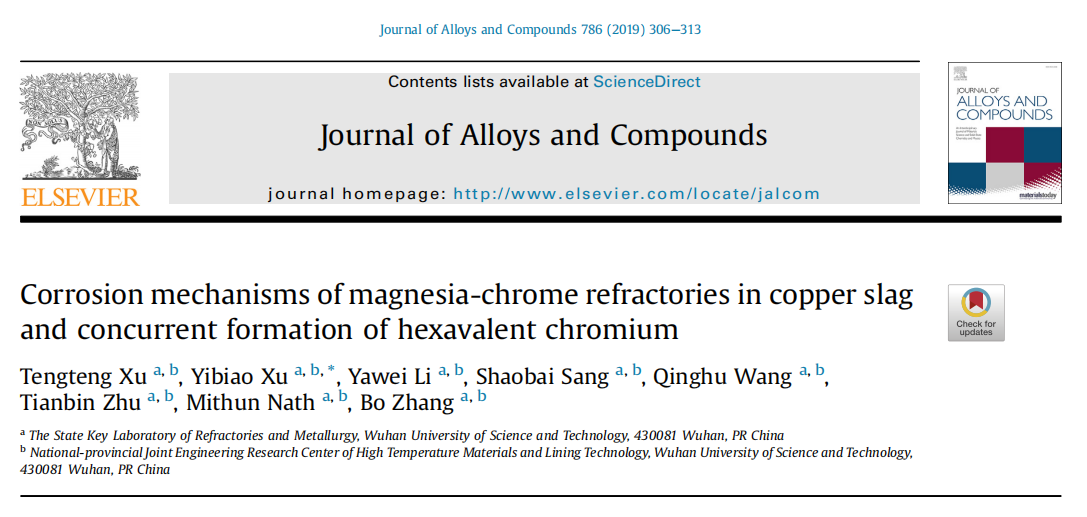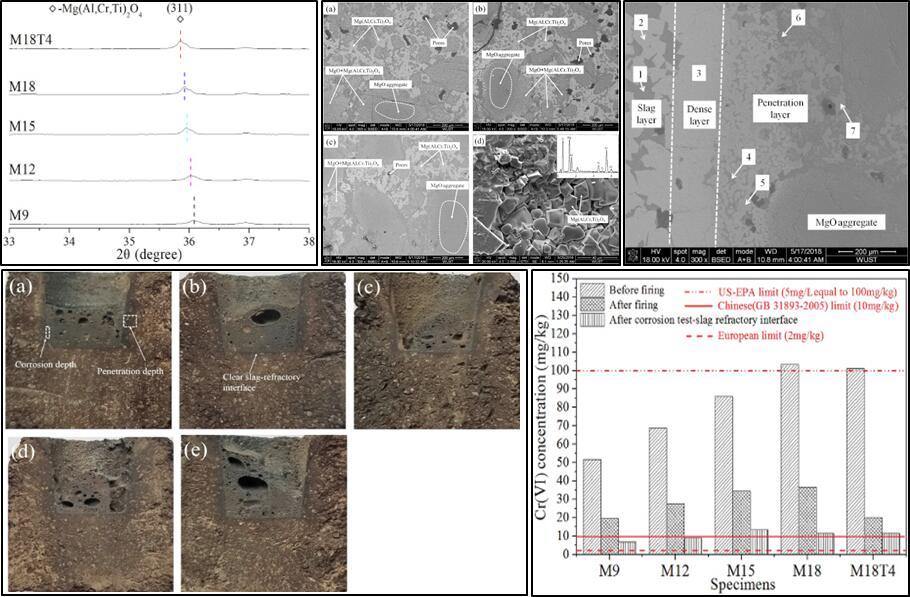Recently, the team published the latest research results under Journal of Alloys and Compounds (IF:4,175).

The research content is as follows, Magnesia-chrome refractories are essential materials for application as wear lining in copper production furnaces. This work systematically investigates the formation of Cr(VI) during preparation of magnesia-chrome refractories and during their corrosion process in copper slag for the first time. It also explains the corrosion mechanism of magnesia-chrome refractories in copper slag. the TiO2 can suppress the formation of Cr(VI) effectively and the copper slag can cause the formed Cr(VI) to be reduced further. Moreover, a dense (Mg,Cu)(Cr,Fe)2O4 spinel layer formed during the corrosion process effectively hinders further penetration of slag and well protects the specimens.

Paper link: https://www.sciencedirect.com/science/article/pii/S0925838819303408
Paper:  Corrosion mechanisms of magnesia-chrome refractories in copper slag and concurrent formation of hexavalent chromium.pdf
Corrosion mechanisms of magnesia-chrome refractories in copper slag and concurrent formation of hexavalent chromium.pdf
